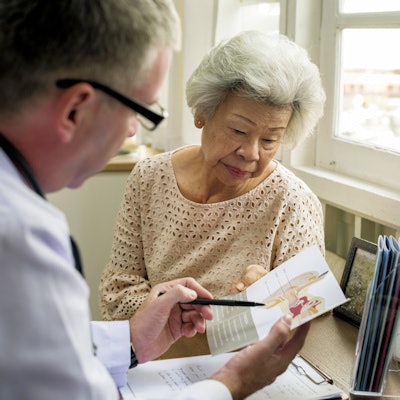
Radiologists have much to contribute to the improvement of patient outcomes through sound population health management efforts, according to a review published November 3 in the American Journal of Roentgenology.
In their review, a team led by Dr. Jessica Porembka of the University of Texas Southwestern Medical Center in Dallas outlined areas of opportunity for radiologists to improve patient care and offered specific tips for doing so, highlighting the urgency that radiologists participate.
"Given radiologists' limited engagement in population health management to date, it is imperative to define the population health management priorities of the specialty so that radiologists' full value in improving population health is realized," the team wrote.
Population health management efforts are concerned with establishing care structures to support better patient health outcomes, and they may address care delivery, reducing inappropriate imaging use, increasing adherence to medication and treatment protocols, and reducing length of hospital stays. Radiology has many opportunities to engage with patients at key moments in their care, from screening and diagnostic imaging to image-guided treatments.
"Radiologists' presence at the intersection of many aspects of health care ... provides the opportunity for increased radiologist engagement in population health management," the team wrote.
Porembka and colleagues described a variety of opportunities that radiologists can leverage, many of which are screening events:
- Breast cancer screening. "Breast cancer screening programs are well suited for incorporation into organizations' population health management efforts," the team wrote.
- Lung cancer screening. "Given that only 2% of eligible individuals are undergoing lung cancer screening, radiologists have the opportunity to positively influence health outcomes by championing these programs through a multidisciplinary collaborative approach," the authors noted.
- Colorectal cancer screening. "Radiology-based screening and surveillance for abdominal aortic aneurysms has life-saving implications and can prompt early intervention to influence population health management," the group wrote.
- Incidental findings. "Appropriate management of incidental findings can benefit patients by facilitating earlier treatment," Porembka and colleagues wrote.
- Opportunistic imaging. "The potential impact of opportunistic imaging is substantial given that the leading causes of adult deaths in the U.S. (coronary artery disease, lung cancer, and chronic obstructive pulmonary disease) can all be identified with diagnostic imaging," the team noted.
- Addressing imaging appropriateness. "Reducing unnecessary imaging while championing appropriate imaging is another way that radiologists can help optimize the role of imaging in population health management," the authors wrote.
The team also offered five suggestions for how radiologists can engage in population health management via the following imaging encounters:
- Educate radiologists about population health management efforts and the role they can play through webinars, CME, and leadership training.
- Encourage participation in multidisciplinary networking programs such as the American College of Radiology's (ACR) Radiology Leadership Institute, the RSNA, or the Association of University of Radiologists' Radiology Alliance for Health Services Research.
- Establish relationships with hospital administration, accountable care organizations, and payers and collaborate on population health programs.
- Use information and quality assurance systems to improve patient care.
- Leverage value-based care structures to support population health programs.
Radiologists have important contributions to make in the healthcare enterprise, according to the team.
"Population health management programs benefit from interdisciplinary collaboration between radiologists and other medical professionals, health system administrators, and legislative policymakers," the group concluded. "Radiologists' engagement and leadership can play a pivotal role in the success of [these] initiatives."




















